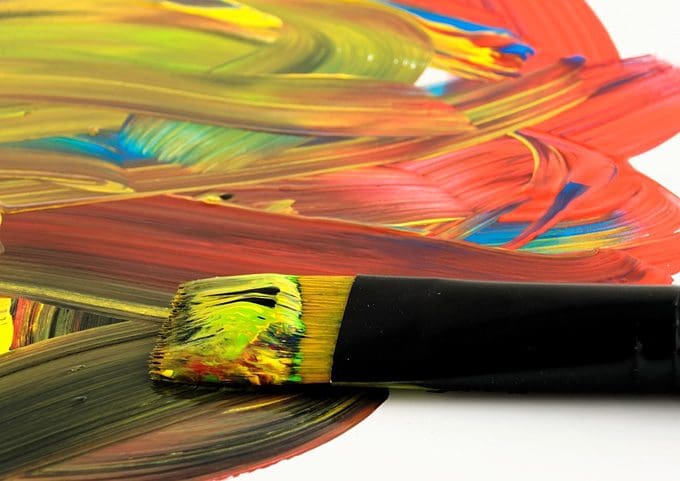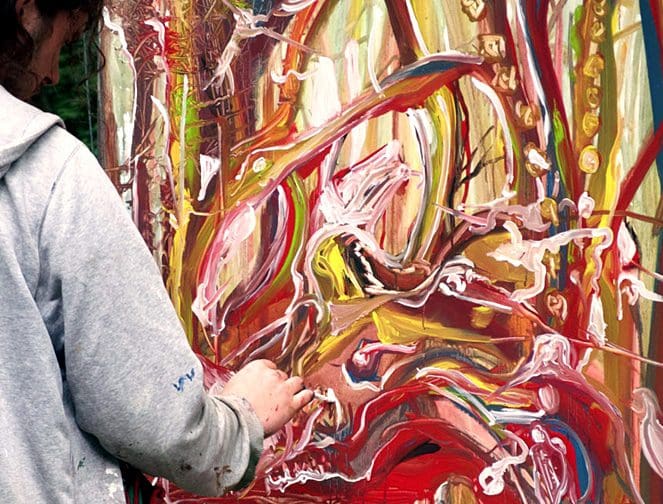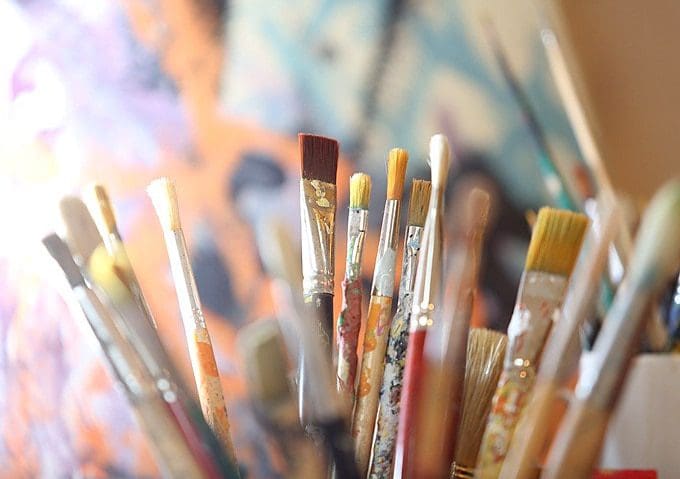words Alexa Wang

If you want to pursue a career in the visual arts, or you simply want to take it up as a hobby, at some point, you’ll probably need to experiment with acrylic paint. Acrylic was first created in 1955. Since then, it has become a popular medium for many artists because it dries fast and can imitate many other styles of paint.
But what is acrylic paint? And what kind of tools do you need to get started? We have the guide to help you answer these questions.
What Is Acrylic?
Acrylic is a water-based medium. This means you can easily mix it with water to vary its consistency. Depending on how you manipulate your paint, you can emulate oil or watercolor paintings, or use the acrylic’s unique characteristics. Since the paint is water-borne, it is also simple to clean your brushes with soap and water.
This kind of paint dries fast. It takes approximately 15-20 minutes for a layer of acrylic paint to dry. It is ideal for artists who work quickly, rather than follow the lengthy process of priming that something like oil painting involves.
Acrylic paint is also favored in mixed media art. Charcoal, pen, chalk, and oil can be easily applied to a dried acrylic-painted surface. You can even mix other substances, like rice, sand, or pasta in the paint to incorporate into your art.

Picking Your Paint
There are two types of grades for acrylic paint: students’ quality and artists’ quality. Students’ quality is often cheaper, but there is less variety and vibrancy in the colors. Its consistency is often less smooth. Artists’ quality is what professionals use. It is more expensive and made with finer pigments.
When you’re just starting, you may opt for the cheaper students’ quality. However, you should invest in higher quality materials if you intend to make art you can sell or display. You can even use students’ quality for underpainting and professional paint for the top layers of your work.
You can opt for a paint set, which will contain the essential colors you need. Otherwise, you can buy them in tubes or jars individually. The 10 colors we recommend starting with are:
- Ivory Black
- Titanium White
- Cadmium Red
- Phthalo Blue
- Cadmium Yellow
- Burnt Sienna
- Dioxazine Purple
- Phthalo Green
- Alizarin Crimson
- Cadmium Orange
You can mix these colors to create any others you might need, without having to spend money on additional tubes.
Picking Your Brush
You can pick up the right brush for your project either at your local art store, or find online painting supplies at sites like ThePaintStore.com.
There are two main styles of paintbrushes to consider: flat and round. Flat brushes are used for long strokes and blending, while round brushes are used for painting large areas and small details. You should have both types available in your arsenal.
Paintbrushes can range from a size 0000 to a size 24. The most flexible brushes are the mid-sized ones, ranging from size 6 to size 8. Beginners will often start with these brushes, then branch out depending on the style of art they prefer to make.
In Conclusion
Beginning your journey with acrylic paint is an exciting thing. You should be sure to invest in all the proper paints, brushes, and accessories as you would with any other hobby or profession. This will help you grasp the basics of the art form as a whole.
Once you have a solid foundation in your craft, don’t be afraid to experiment. Art is all about expressing yourself. The most important thing to learn is to have fun, and paint how you feel and what you’re passionate about. That is what will really make you an artist.





